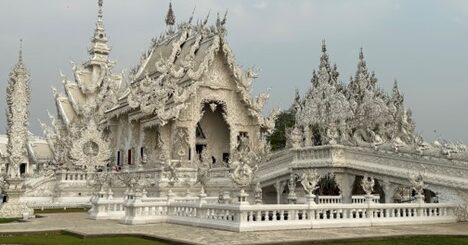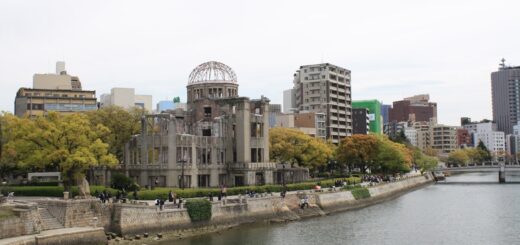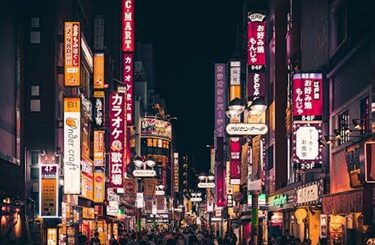Chaing Mai
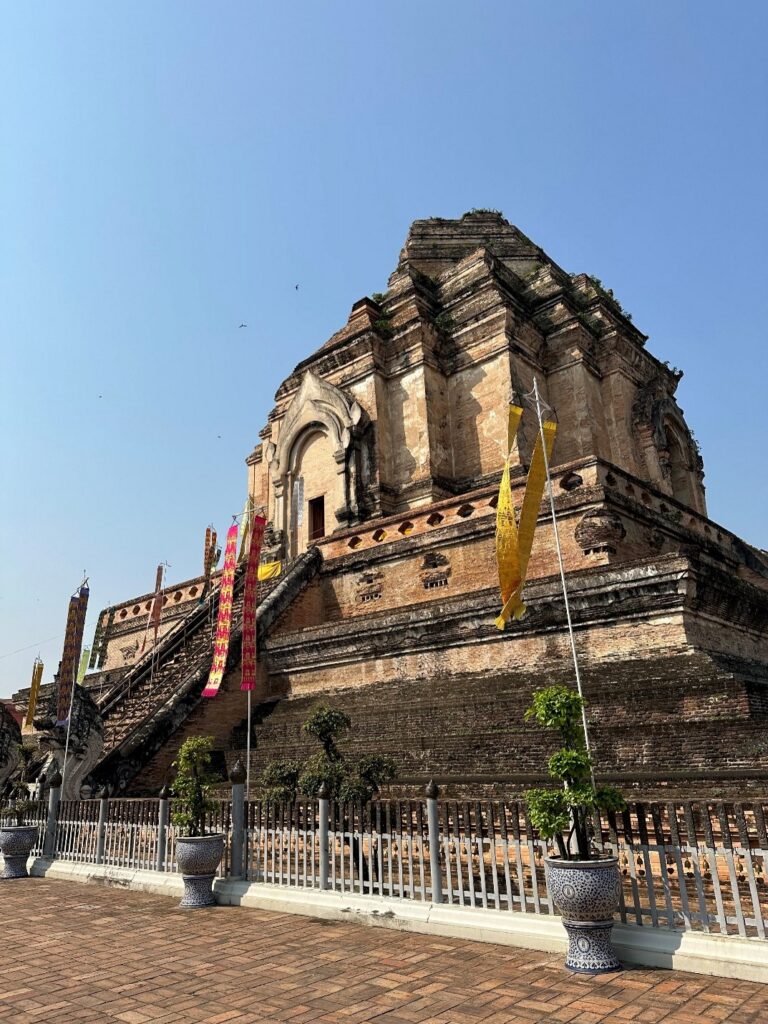
Travel Advice for Seniors: Chaing Mai
Chaing Mai is a hop skip from Chaing Rai and a “must-see” in northern Thailand. It’s about a three- and half-hour drive from one city to the other and a nice drive is usually relaxing and informative for us. It gives you a chance to ask your guide/driver some questions about the country and what you’ve seen or are getting ready to see, provided they or you speak a common language. It also gives you a chance to appreciate the countryside.
Chaing Mai is the largest city in northern Thailand, capital of Chiang Mai province and the second largest city in Thailand. It was founded in 1296 and was the capital of the Lanna Kingdom for three hundred years. It has plenty of temples and historical sights as well as being well-known as a local craft center.
We only spent a half day in Chaing Mai, followed by a tour to Doi Suthep and Wat Phra in the afternoon. It was a short visit, but it was fairly crowded and so didn’t mind seeing the sights and heading onward.
We started with a morning rickshaw ride to the Tapae Gate, a well-preserved gate leading into the Old Town, originally built to protect the city from Burmese invaders. We continued on foot to the Three Kings Monument, a sculpture of the three founding fathers of the city.
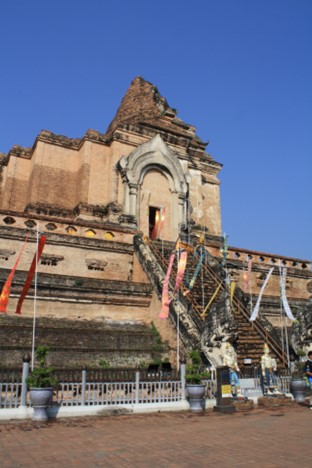
Next up was Wat Chaing Man, one of the oldest temples in Chiang Mai. It features a beautiful Lanna-style chedi, or Buddhist temple or stupa, supported by rows of elephant-shaped buttresses. Accessible.
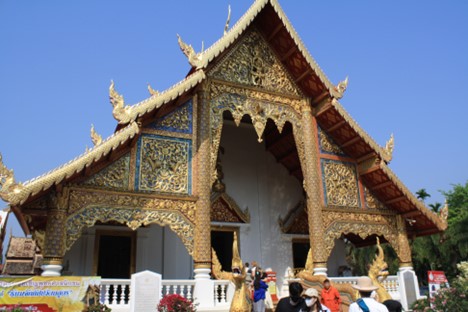
Wat Chedi Luang, also located in the Old Town area, is significant in that for many years it housed the Emerald Buddha, the country’s most sacred object. Following an earthquake in the 1545, the icon was relocated to Bangkok, where it resides today. The temple is also in the Lanna style and was known for its towering pagoda prior to the earthquake.Accessible parking and entrance.
After a light lunch, we headed out to Doi Suthep and to the golden Wat Phra That Doi Suthep. It’s about a mile and a half walk up the mountain to get to the temple, but it’s well worth it. Beautiful views of the city await!Accessible ramps and lift to ticket booth, but walkways may be uneven.
At the end of the road there are 306 steps that lead to the wat, so stop and take a break before proceeding. The stairs are notable because of Naga, the legendary half man/half serpent that is one of the legendary animals that protects Buddhism, and it is said that each steps purifies the pilgrims on the way to the temple.
The Buddhist temple is one of the most sacred pilgrimage spots in Thailand and is still in service today, having been built in 1383. It was originally built to house a small piece of the shoulder bone of the Buddha.
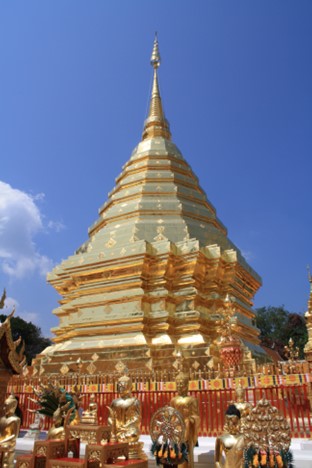
It is a very popular place for tourists as well as pilgrims and we were fortunate to be allowed into the temple area to have a blessing said over us and to be presented with a knotted string to wear around our wrists. A word on the blessing…we did donate to receive the blessing, and the blessing included kneeling and walking on your knees over to a monk who issued the blessing and used a bundle of grass to lightly spray holy water to either side of you. The monks cannot touch women, so be careful as you kneel-walk over to the next monk to tie a ribbon around your wrist.
Wat Phra That Doi Suthep was definitely a highlight of our stop in Chaing Mai. A second highlight was the fantastic Night Market. Chaing Mai is well-known for its extensive Night Market and it was not to be missed. We went out in the early evening, and it was just getting started. This is a great place to purchase inexpensive souvenirs and is also just a great walk around to see the sights and visit. We picked up several small items here and some Thai Tea, which we had grown accustomed to driving while in Thailand. It’s a mixture of tea, milk and sugar and has a uniquely Thai taste.
We packed a lot into one day in Chaing Mai and it would’ve been nice to have stayed and extra day, but we were headed to the Thai beach next and were ready for a little relaxing in the sunshine!
Where we stayed: Banthai Village Boutique Hotel. Breakfast included. Nice hotel, centrally located.Accessible.
How we got there: Three and half hour drive from Chaing Rai to Chaing Mai. This was part of a four-week private tour through Southeast Asia, touring Vietnam, Cambodia, Laos and Thailand.
General Accessibility Information: See notes above. Thailand is generally not considered very handicapped accessible, with limited wheelchair accessibility in most places. Some tour operators offer accessible tours, and some high-end hotels are accessible. Some attractions in larger cities have wheelchair access.Call in advance to verify and make specialty arrangements.However, see our sections on specialty apps and accessible travel for more on accessibility assistance.

